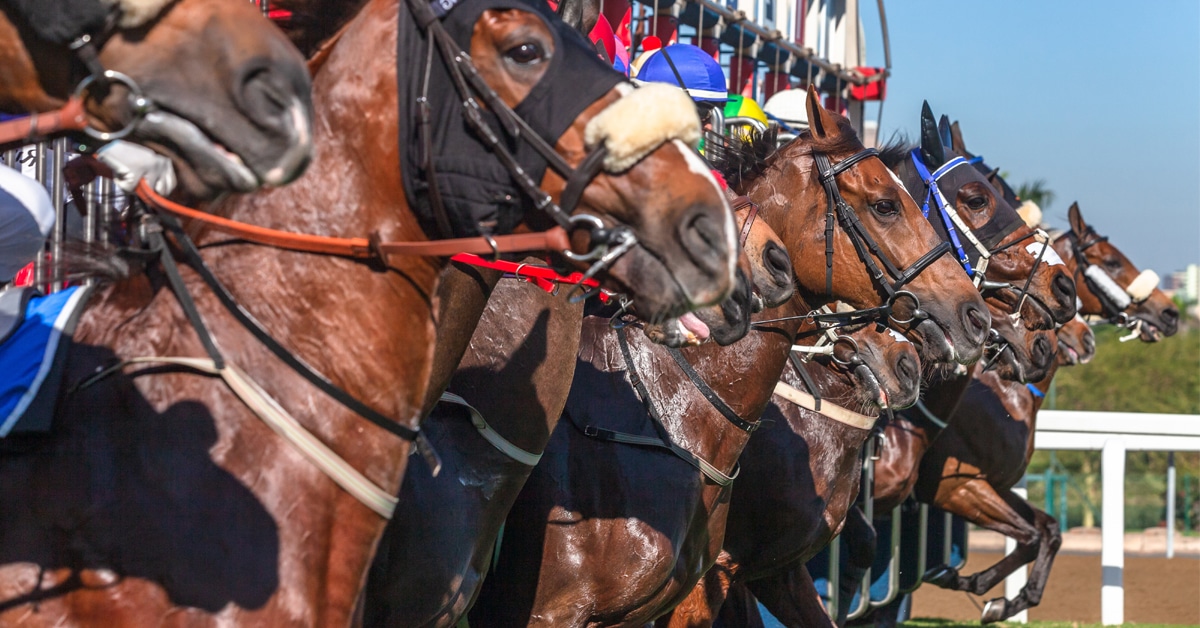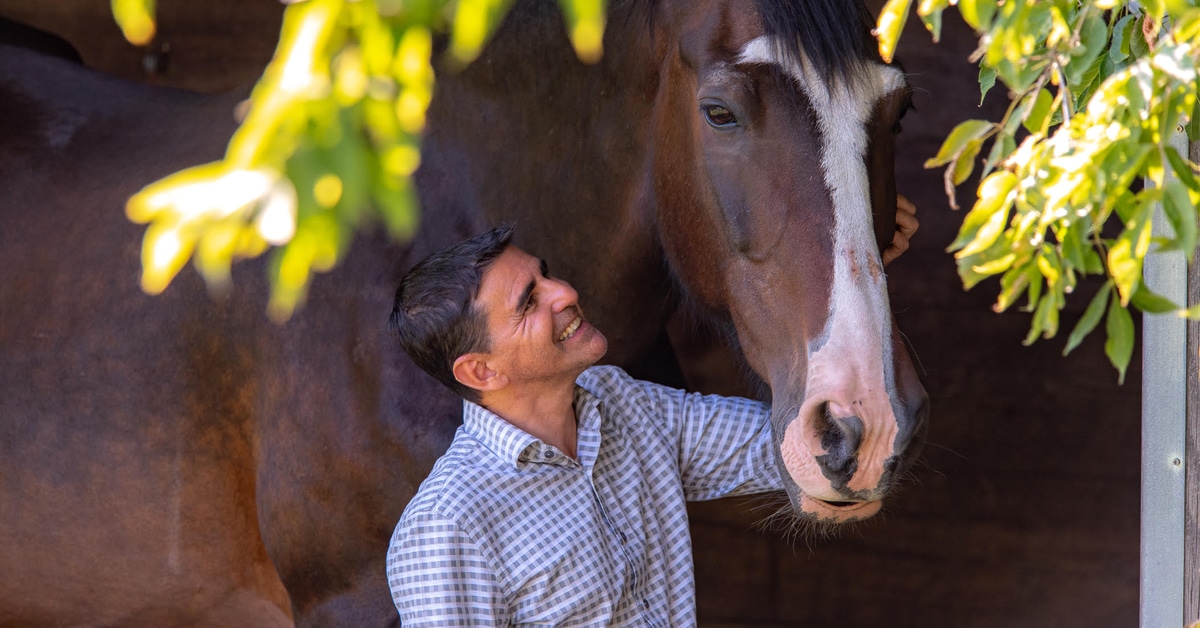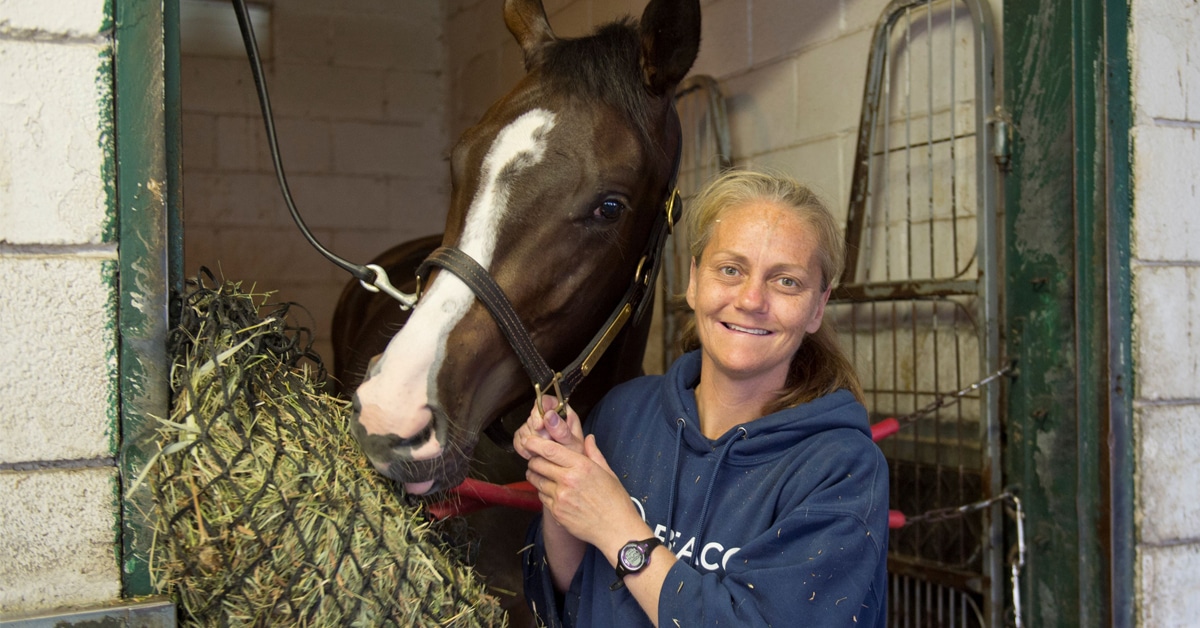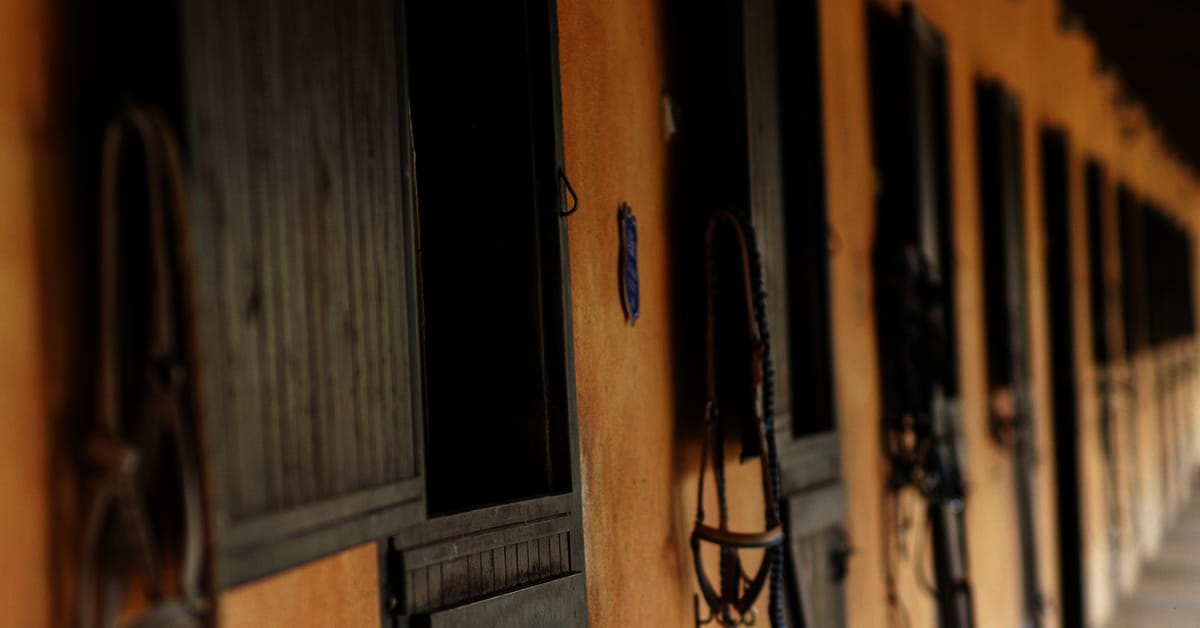What is Rotavirus?
Rotavirus diarrhea is a very serious, life-threatening disease in foals usually caused by Rotavirus Group A viruses. Adult horses are not typically affected by it. Rotaviruses are highly contagious between susceptible animals. Vast numbers of virus particles are shed in the diarrhea of affected animals, but only small numbers of virus particles are needed to cause disease via fecal-oral transmission. Typically, different rotavirus groups and strains infect specific species, however, it has been documented that strains can ‘jump’ species, making it possible for strains not typically associated with humans to infect people. As such biosecurity precautions should always be taken when working with animals with diarrhea.
Clinical Signs
Rotavirus diarrhea in susceptible foals causes watery diarrhea, anorexia as the foal stops nursing, abdominal distention usually due to gut inflammation, transient gut stasis and often colic. Massive fluid and electrolyte loss through diarrhea, as well as not nursing, causes rapid and severe dehydration and electrolyte derangements that can be fatal. Susceptible, infected foals will show signs of disease as young as 24-48 hours of age.
Rotavirus Effects on the Gut
The virus damages the mature cells of the small intestine at the tips of the villi (microscopic fingerlike projections that increase gut surface are for digestion and absorption). This massively reduces the foal’s ability to digest milk, especially the milk sugar, lactose, leading to maldigestion and malabsorption. It can also create an environment in the gut that can allow pathogenic bacteria to overgrow, possibly creating other problems.
The severity of disease depends on the foal’s age, immune status and the number and virulence of rotavirus particles ingested. Typically, younger foals are more severely affected.
Treatment of Rotavirus Diarrhea
Treatment is supportive with the mainstay of treatment being intravenous fluid therapy. This allows foals to maintain their hydration and electrolyte balance, and are administered by or under the guidance of your veterinarian. In very young foals, your veterinarian may also place the foal on prophylactic antibiotics to help prevent bacteria in the gut translocating across the inflamed gut wall and causing a joint infection, for example. Since rotavirus is a viral infection, antibiotic therapy does not treat the infection directly. Your veterinarian may also place the foal on gastric protectants to reduce the chance of gastric ulcer development. In some cases, not allowing or strictly limiting nursing can be beneficial but must only be done in conjunction with your veterinarian or at a veterinary hospital because such young foals are so dependent on nursing for their hydration and energy needs, and they require intensive care should nursing be restricted.
Prevention
Strict hygiene and biosecurity are essential to prevent the spread of rotavirus among foals. No ‘one size fits all’ biosecurity protocol exists and as such designing one for your farm is a team effort between you and your veterinary team. Common basic hygiene which includes wearing gloves and clean protective clothing to handle foals, using foot dips with an appropriate disinfection outside stalls, dedicated footware for foaling barns, reducing animal, human and vehicular traffic in barns and between barns, not using leaf blowers or power washers in barns with horses in them, are just a few items among many to consider in a protocol.
Disinfectants
Bleach is not an appropriate product to use in a farm/barn situation. Its activity is too easily destroyed by organic material to be in any way, shape or form effective. Peroxygen compound or Phenolic compound disinfectants are recommended. A list of such compounds may be found here but it is important to read the instructions.
Examples of such disinfectants include Rescue®, Oxy-Sept 333®, Virkon-S®, One Stroke Environs®, Pheno-Tek II and TekTrol. (The University of Kentucky does not endorse or promote any commercial products. These names are for informational purposes only.) Additional resources relating to biosecurity measures may be found on the Equine Disease Communication Center website here.
- When thinking about disinfection please remember:
- to clean surfaces of grease and organic debris
- replace foot dip container disinfection solution frequently to prevent inactivation by organic debris
- to mix the correct dilution of disinfectant solution carefully – stronger is not always better!
- to allow sufficient contact time for disinfection
Vaccination
Zoetis® offers a Rotavirus Group A [G3 strain] vaccine for the administration to mares using three doses given at months 8, 9 and 10 of gestation during each and every pregnancy. This vaccine has been immensely helpful in preventing neonatal Rotavirus Group A diarrhea in foals. However, we do see Rotavirus Group A (G3 and G14 strains) as a cause of diarrhea in older foals, aged 75-120 days of age. At this age the disease is typically mild and self-limiting with minimal veterinary intervention required. Foals typically recover completely from rotavirus infections with timely veterinary care and supervision.
Equine Rotavirus B
During the season of 2021, a new rotavirus strain, Equine Rotavirus B, was identified in neonatal foals affected with severe watery diarrhea (see below). The discovery of this virus was the result of a massive collaborative effort between our farm and veterinary community and researchers at the University of Kentucky Gluck Equine Research Center and Veterinary Diagnostic Lab. Research into this virus continues with the ultimate goal of being able to generate a vaccine to help prevent Rotavirus B neonatal disease in foals.
Our recommendations for the prevention and control of this disease are the same as for Rotavirus Group A pending further information at this time. We cannot stress highly enough the need for proper biosecurity protocols on your farms as the critical tool to prevent and control infection.
Rotavirus Testing
Understanding rotavirus and its prevalence in our equine population is important for us to gain traction with this disease and gain leverage to win research grants to continue our work. We encourage you to test fecal samples from foals with diarrhea in consultation with your veterinarian (please chill the sample and submit the same or next day).
***
Recent Research: Equine Rotavirus B and Neonatal Foal Diarrhea
Group A and B rotaviruses are significant enteric pathogens that cause diarrhea of variable severity in humans and domestic animals. Despite no difference in clinical signs or symptoms, it has been well documented that there is no antibodymediated cross-protection between groups A and B. The horse is a unique species in which only group A rotaviruses typically cause foal diarrhea outbreaks.
During the 2021 foaling season (February and March) in central Kentucky, increased frequencies of diarrhea were noted in neonatal foals between 1 and 4 days of age. Mares had been previously vaccinated with an inactivated monovalent equine rotavirus A vaccine during their pregnancy. Foals developed diarrhea at approximately 24 h of age and diarrheic episodes typically lasted 3-4 days. Some farms experienced up to 100% morbidity.
Newly born foals on affected farms quickly developed diarrhea, suggesting a highly contagious disease. Clinical signs included inappetence, weakness, dehydration, severe electrolyte imbalance, and watery yellow and foul-smelling diarrhea. Hemorrhagic watery diarrhea was noticed in some cases. None of the foal’s dams developed diarrhea.
Diagnostic investigation of fecal samples from diseased foals, which included PCR and microbial culture, failed to detect diarrhea-causing pathogens, including equine rotavirus A. Interestingly, metagenomic sequencing data identified an abundant amount of novel rotavirus B genome in fecal specimens from affected foals and absence of other known enteric pathogens, suggesting an etiological role of this rotavirus B in neonatal foal diarrhea. Further evidence linking rotavirus B to this outbreak of highly contagious foal diarrhea is supported by the poor responses of the affected foals to antibiotic treatment as well as seemingly ineffective equine rotavirus A-specific passive maternal antibodies in affected foals against this new virus. Subsequent analysis of 33 foal diarrheic samples by RT-qPCR identified 23 rotavirus Bpositive cases (69.69%). Despite a small sample size, the prevalence of equine rotavirus B in diseased foals was similar to that reported in equine rotavirus A-associated foal diarrhea outbreaks.
Bioinformatic analysis of the viral genome data showed that the protein sequence of all 11 viral segments had greater than 96% homology (relatedness) with group B rotaviruses previously found in ruminants. Furthermore, evolutionary studies demonstrated clustering of the equine virus with group B rotaviruses of caprine and bovine strains that circulated in the USA. These results indicate the possibility that the equine rotavirus B was of ruminant origin.
In summary, evidence suggests that a novel, ruminant-origin, group B rotavirus has emerged in horses and was associated with outbreaks of neonatal foal diarrhea in the 2021 foaling season in Kentucky. Emergence of the ruminant-like group B rotavirus in foals clearly warrants further investigation due to the significant impact of the disease in neonatal foals and its economic impact on the equine industry.
The Latest










